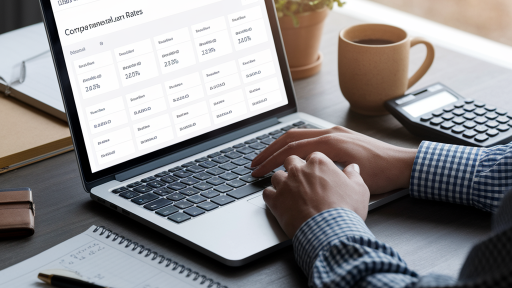Navigating the world of finance can often feel like learning a new language, with terms and products that seem complex at first glance. One of the most common and versatile tools you’ll encounter is the personal loan, a financial product designed to help individuals cover a wide range of expenses.
Whether you’re looking to consolidate high-interest debt, fund a home renovation project, or cover an unexpected medical bill, a personal loan might be the solution you need. This guide will demystify the entire process, explaining exactly what a personal loan is, how it functions from application to repayment, and what you need to consider before signing on the dotted line.
Understanding the Basics of a Personal Loan
At its core, a personal loan is a type of installment loan. This means you borrow a fixed amount of money—a lump sum—from a lender like a bank, credit union, or online lender. You then agree to pay back that amount, plus interest and any applicable fees, in regular, fixed payments (usually monthly) over a set period of time, known as the loan term.
Unlike a mortgage, which is used to buy a house, or an auto loan, for purchasing a vehicle, a personal loan can be used for almost any purpose. This flexibility is one of its biggest attractions. The interest rates and repayment terms are also typically fixed, which means your monthly payment will not change. This predictability makes it easier to budget and manage your finances throughout the life of the loan.
Secured vs. Unsecured Personal Loans: A Key Distinction
Personal loans generally fall into two main categories: secured and unsecured. The difference between them is crucial as it affects your eligibility, interest rate, and the risk you take on as a borrower. Understanding this distinction is the first step in choosing the right type of loan for your situation.
Unsecured Personal Loans
The vast majority of personal loans are unsecured. This means you don’t have to provide any collateral—like a car, house, or savings account—to back the loan. Instead, the lender approves your application based on your creditworthiness. They will look at factors like your credit score, credit history, income, and debt-to-income ratio to assess the risk of lending to you. Because the lender assumes more risk with an unsecured loan, interest rates can be higher compared to secured options.
Secured Personal Loans
A secured personal loan, on the other hand, is backed by an asset you own. You pledge this asset as collateral, which gives the lender a safety net. If you fail to repay the loan (default), the lender has the legal right to seize the collateral to recoup their losses. Because this reduces the lender’s risk, secured loans often come with lower interest rates, higher borrowing limits, and may be easier to qualify for, especially for applicants with less-than-perfect credit.
| Feature | Unsecured Personal Loan | Secured Personal Loan |
|---|---|---|
| Collateral Required | No | Yes (e.g., car, savings account) |
| Lender’s Risk | Higher | Lower |
| Typical Interest Rates | Generally higher | Generally lower |
| Qualification Basis | Creditworthiness (credit score, income) | Creditworthiness and value of collateral |
| Consequence of Default | Credit score damage, collections, lawsuit | Lender can seize the collateral |
Common Uses for a Personal Loan
The versatility of personal loans means they can be used for a wide array of financial needs. While some lenders may have minor restrictions, you generally have the freedom to use the funds as you see fit. Here are some of the most popular reasons people take out a personal loan:
- Debt Consolidation: Combining multiple high-interest debts, such as credit card balances, into a single loan with a lower, fixed interest rate. This can simplify payments and potentially save money on interest.
- Home Improvements: Funding renovations, repairs, or upgrades to your home without needing to take out a home equity loan.
- Major Life Events: Covering the costs of significant events like a wedding, a big move, or even adoption-related expenses.
- Medical Bills: Paying for medical or dental procedures that aren’t fully covered by insurance.
- Large Purchases: Financing a significant one-time purchase, such as new appliances, furniture, or even a boat.
- Emergency Expenses: Handling unexpected costs like a major car repair or an urgent family matter when you don’t have enough in your emergency fund.
How Does the Personal Loan Process Work? A Step-by-Step Guide
Securing a personal loan involves a series of straightforward steps. While the specifics can vary slightly between lenders, the overall journey from application to funding is generally consistent.
Step 1: Determine Your Needs and Check Your Credit
First, figure out exactly how much you need to borrow. It’s wise to borrow only what you need to avoid unnecessary interest payments. Next, check your credit score and review your credit report. Your credit is a primary factor in determining your eligibility and the interest rate you’ll be offered. Knowing your score beforehand helps you gauge what kind of terms you can expect.
Step 2: Shop Around and Compare Lenders
Don’t accept the first offer you see. Compare personal loans from various sources, including your local bank, credit unions, and online lenders. Many online lenders allow you to “pre-qualify,” which shows you potential rates and terms based on a soft credit check that won’t affect your credit score.
Step 3: Gather Your Documentation
Lenders will need to verify your identity and financial information. To streamline the process, gather necessary documents ahead of time. This typically includes:
- Proof of identity (e.g., driver’s license, passport)
- Proof of address (e.g., utility bill, lease agreement)
- Proof of income (e.g., pay stubs, W-2s, tax returns)
- Bank account information
Step 4: Submit Your Application
Once you’ve chosen a lender, you’ll complete a formal application. This will require you to provide the documentation you gathered and consent to a hard credit inquiry, which will temporarily have a small impact on your credit score.
Step 5: Await Approval and Receive Funds
After you submit your application, the lender will review it. The approval timeline can range from a few minutes for some online lenders to several business days for traditional banks. If approved, you’ll receive a loan agreement to sign. Once signed, the funds are typically deposited directly into your bank account, often within one to three business days.
Step 6: Manage Your Repayments
Your first payment will be due about 30 days after you receive the funds. It’s crucial to make all payments on time and in full each month. Setting up automatic payments is an excellent way to ensure you never miss a due date, which is vital for maintaining a good credit score.
Key Factors That Influence Your Loan Approval and Terms
Lenders look at several key metrics to decide whether to approve your loan and at what interest rate. Understanding these factors can help you strengthen your application.
Your Credit Score and History
This is arguably the most important factor. A higher credit score signals to lenders that you are a responsible borrower and a lower risk. Applicants with excellent credit (typically 720 or higher) are more likely to be approved and receive the most competitive interest rates. A history of on-time payments and responsible credit management is key.
Debt-to-Income (DTI) Ratio
Your DTI ratio compares your total monthly debt payments to your gross monthly income. Lenders use it to assess your ability to manage additional monthly payments. A lower DTI (generally under 40%) indicates you have enough income to comfortably handle a new loan payment, increasing your chances of approval.
Income and Employment Stability
Lenders need to see that you have a stable and sufficient source of income to repay the loan. They will verify your employment and income to ensure you have the financial capacity to meet your obligations. A consistent employment history works in your favor.
Decoding Personal Loan Terminology
When comparing loan offers, you’ll encounter several important terms. Understanding them is essential to accurately assess the cost of the loan.
- Principal: This is the initial amount of money you borrow from the lender, before any interest is added.
- Interest Rate: The percentage of the principal charged by the lender for the use of its money. This does not include fees.
- Annual Percentage Rate (APR): This is the most important figure for comparing loan costs. The APR includes the interest rate plus any fees, such as origination fees, giving you the true annual cost of borrowing.
- Loan Term: The length of time you have to repay the loan. Terms typically range from two to seven years. A longer term means lower monthly payments but more total interest paid over the life of the loan.
- Origination Fee: A one-time fee some lenders charge for processing your loan application. It’s usually a percentage of the loan amount and is often deducted from the principal before you receive the funds.
The Pros and Cons of Taking Out a Personal Loan
Like any financial product, personal loans have both benefits and drawbacks. Weighing them carefully will help you decide if it’s the right choice for you.
Advantages of Personal Loans
- Flexibility: You can use the funds for nearly any purpose.
- Fixed Payments: With a fixed interest rate, your monthly payment is predictable and easy to budget for.
- Lower Interest Rates: They often have lower APRs than credit cards, especially for borrowers with good credit.
- No Collateral Required: For unsecured loans, your personal assets are not at risk if you have trouble repaying.
Disadvantages of Personal Loans
- Interest Costs: You will pay back more than you borrowed due to interest, which can be significant.
- Fees: Some loans come with origination fees, late payment fees, or prepayment penalties that add to the overall cost.
- Impact on Credit: Taking on new debt will increase your debt load and the hard inquiry will temporarily lower your credit score.
- Commitment: A loan is a multi-year commitment. You must be confident in your ability to make payments for the entire term.
Final Thoughts: Is a Personal Loan Right for You?
A personal loan can be an incredibly effective financial tool when used responsibly. It offers a structured way to finance significant expenses or consolidate debt with the benefit of predictable payments and potentially lower interest rates than other forms of credit. However, it is a serious financial commitment that requires careful consideration of your budget and ability to repay the debt over several years.
Before you apply, assess your financial situation, compare offers from multiple lenders, and read all the terms and conditions carefully. By fully understanding how a personal loan works, you can make an informed decision that aligns with your financial goals and helps you navigate your expenses with confidence.





